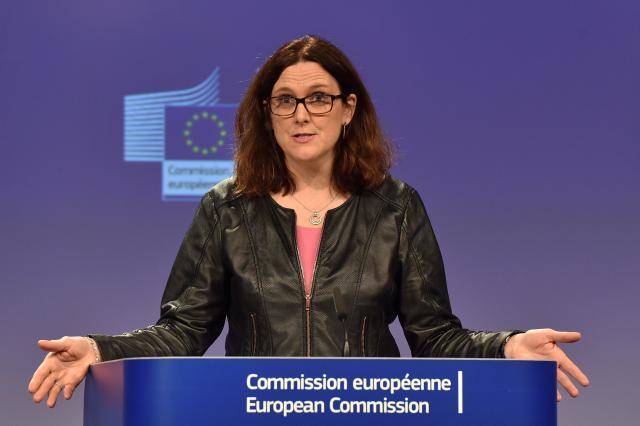A day after U.S. President Donald Trump escalated his trade war with China by imposing 10 percent tariffs on $200 billion of Chinese imports, the European Union unveiled how it believes market-distorting subsidies should be tackled.
Trump said last month that he could withdraw from the WTO, potentially undermining one of the foundations of the modern global economy which the United States was instrumental in creating.
“The world has changed, the WTO has not. It’s high time to act to make the system able to address challenges of today’s global economy and work for everyone again. And the EU must take a lead role in that,” EU trade chief Cecilia Malmstrom said in a statement.
The Commission said it wanted to update global trade rules, strengthen the power of the WTO to monitor trade and find a way of overcoming the current deadlock of the WTO dispute settlement system.
Washington has charged the WTO with losing its focus on trade negotiations in favor of litigation and has blocked appointments to its appeals chamber that settles disputes. By the end of September, the normally seven-strong chamber will have only three judges, the number required to hear each appeal.
The tough U.S. stance has prompted a flurry of diplomatic talks as WTO members try to work out how to respond. Senior trade officials met in Geneva in July and will reconvene this week, before a meeting of ministers in Ottawa next month.
EU leaders called on the Commission in June to produce proposals with “like-minded partners” that could improve the WTO in crucial areas, such as subsidies, enforcement and negotiations.
In May French President Emmanuel Macron proposed an overhaul of global trading rules, urging the EU, the United States, China and Japan to draw up a blueprint for WTO reform by the end of the year.
The WTO works on the basis of consensus among its 164 members and, with vetoes for each, every new initiative risks becoming a bargaining chip in a bigger negotiation.
Few reform efforts have succeeded and many are stuck, including talks on cutting agricultural subsidies, increasing market access, reforming rules on access to medicines, improving the WTO dispute system and liberalizing trade in services.
There are also some fundamental divides that Trump has brought into the open, such as the power of WTO judges, which countries should qualify as “developing economies” deserving special treatment, and whether China trades fairly.
















































